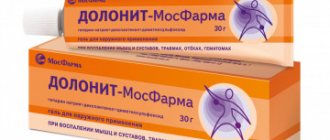Terbinafine-MFF
The drug is generally well tolerated, side effects are usually mild or moderate and transient.
When assessing the frequency of side effects, the classification of the frequency of side effects is used according to the recommendations of the World Health Organization (WHO): very often
(≥1/10);
often
from (≥1/100 - <1/10);
uncommon
(≥1/1000 - <1/100);
rare
(≥1/1000 - <1/1000);
very rare
(<1/10000), including isolated reports;
frequency unknown -
based on available data, it is not possible to determine the frequency of occurrence.
Disorders of the hematopoietic system:
infrequently
- anemia;
very rarely -
neutropenia, agranulocytosis, thrombocytopenia, pancytopenia.
Immune system disorders:
very rarely -
anaphylactoid reactions (including angioedema), cutaneous and systemic lupus erythematosus (or their exacerbation).
Mental disorders:
often -
depression;
infrequently -
anxiety.
Nervous system disorders:
very often -
headache;
often -
dizziness, disturbance of taste, up to their loss (usually recovery occurs within a few weeks after stopping treatment);
infrequently -
paresthesia, hypoesthesia. There are isolated reports of cases of long-term disturbances of taste. In some cases, while taking the drug, exhaustion was noted.
Visual disorders:
infrequently - visual impairment.
Hearing and labyrinth disorders:
infrequently - tinnitus.
Disorders of the liver and biliary tract:
Rarely -
hepatobiliary dysfunction (mainly cholestatic in nature), including liver failure, including very rare cases of severe liver failure (some fatal or requiring liver transplantation; in most cases where liver failure developed, patients had serious underlying systemic diseases and the investigative relationship of liver failure with taking terbinafine was questionable), hepatitis, jaundice, cholestasis, increased activity of liver enzymes.
Disorders of the digestive system:
very often
- bloating, loss of appetite, dyspepsia, nausea, mild abdominal pain, diarrhea.
Disorders of the skin and subcutaneous tissues:
very often -
rash, urticaria;
uncommon
- photosensitivity reactions;
very rarely -
Stevens-Johnson syndrome, toxic epidermal necrolysis, acute generalized exanthematous pustulosis, erythema multiforme, toxic skin rash, exfoliative dermatitis, bullous dermatitis, psoriasis-like skin rashes or exacerbations of psoriasis, alopecia.
Musculoskeletal and connective tissue disorders:
very often - arthralgia, myalgia.
General disorders:
often -
feeling of fatigue;
infrequently
- increased body temperature.
Laboratory and instrumental data:
infrequently -
loss of body weight (secondary to a disturbance in the sense of taste).
Based on spontaneous reports received during the post-registration period and literature data, the following adverse events were identified, the frequency of which, due to the inaccurate number of patients, cannot be established:
Immune system disorders:
anaphylactic reactions; serum sickness-like syndrome.
Visual disorders:
blurred vision, decreased visual acuity.
Disorders of the skin and subcutaneous tissues:
drug rash with eosinophilia and systemic symptoms (rash, swelling, fever and swollen lymph nodes).
Hearing and labyrinth disorders:
hearing loss, hearing impairment.
Vascular disorders:
vasculitis
Nervous system disorders:
loss of smell, including for a long period of time; decreased sense of smell.
Digestive system disorders:
pancreatitis.
Musculoskeletal and connective tissue disorders:
Rhabdomyolysis
Common disorders:
flu-like syndrome.
Blood and lymphatic system disorders:
anemia.
Laboratory and instrumental data:
increased activity of creatine phosphokinase in blood plasma.
If any of the side effects indicated in the instructions get worse or you notice any other side effects not listed in the instructions, tell your doctor!
Terbinafine tablets
Registration number: R No. LSR-008787/10
Trade name of the drug: Terbinafine-MFF.
International nonproprietary name: Terbinafine.
Dosage form: Tablets.
Composition per tablet: Active substance:
- Terbinafine hydrochloride 281 mg (corresponding to 250 mg terbinafine base).
Excipients (to obtain a tablet weighing 0.390 g):
- Colloidal silicon dioxide – 2 mg
- Calcium stearate monohydrate (calcium stearate 1-water) – 2 mg
- Potato starch - 29 mg
- Microcrystalline cellulose (MCC-200) – 47 mg
- Lactose monohydrate – 8 mg
- Crospovidone (polyplasdone XL-10) – 8 mg
- Crospovidone (polyplasdon XL) – 8 mg
- Povidone K 90 (plasdon K-90) - 5 mg
Description: Tablets are white or almost white, with a slight specific odor, flat-cylindrical in shape with a chamfer and a score.
Pharmacotherapeutic group: Antifungal agent.
ATX code: D01BA02
Pharmacodynamics: Terbinafine belongs to the group of allylamines and has a wide spectrum of antifungal action. In low concentrations it has a fungicidal effect on dermatophytes Trichophyton spp. (T. rubrum, T. mentagrophytes, Ttonsurans, T. verrucosum, Tviolaceum), Microsporum canis, Epidermophyton floccosum, molds (for example, Scopulariopsis brevicaulis), yeasts, mainly Candida albicans. For fungi Candida spp. and their mycelial forms have a fungicidal or fungistatic effect, depending on the type of fungus. Terbinafine disrupts the early stage of biosynthesis of the main component of the fungal cell membrane (ergosterol) by inhibiting the enzyme squalene epoxidase. When administered orally, it is not effective in the treatment of pityriasis versicolor caused by Pityrosporum ovale, Pityrosporum orbiculare (Malassezia furfur).
Pharmacokinetics: When taken orally, more than 70% is well absorbed; absolute bioavailability due to the “first pass” effect is reduced by 40%. After a single oral dose of 250 mg, the time to reach maximum concentration (TCmax) is about 2 hours; maximum concentration (dmax) - 1 μg/ml. The area under the curve of the infection localization is 2 - 6 weeks; for mycoses of other parts of the body, legs or torso: 2 - 4 weeks; for mycoses caused by fungi of the genus Candida: 2 - 4 weeks; for mycoses of the scalp caused by fungi of the genus Microsporum: more than 4 weeks.
Children: With body weight from 20 to 40 kg: 125 mg 1 time per day. For body weight more than 40 kg: 250 mg once a day. The duration of treatment for mycoses of the scalp is about 4 weeks; for infection with Microsporum canis it can be longer.
Elderly patients are prescribed the drug in the same doses as adults. For patients with hepatic and renal insufficiency, terbinafine is prescribed at a dose of 125 mg once a day.
Side effect:
- Dyspeptic disorders (decreased appetite, nausea, diarrhea, feeling of fullness in the stomach, abdominal pain)
- Allergic skin reactions (urticaria, rash)
- Musculoskeletal reactions (arthralgia, myalgia), aggravation of systemic lupus erythematosus
Disorders of taste, including their loss (recovery occurs within several weeks after cessation of treatment).
Rarely (with a frequency of 0.01 - 0.1%) a hepatotoxic effect is observed (increased activity of “liver” transaminases, liver failure). Malignant exudative erythema (Stevens-Johnson syndrome), toxic epidermal necrolysis (Lyell's syndrome), psoriasis-like skin rashes, exacerbation of psoriasis, anaphylactoid reactions, agranulocytosis or thrombocytopenia, neutropenia, lymphopenia.
Overdose: Symptoms: Nausea, vomiting, headache, dizziness, pain in the lower abdomen, in the epigastric region, frequent urination.
Treatment: Gastric lavage followed by the use of activated charcoal and/or symptomatic therapy.
Interaction with other drugs: Inhibits the CYP2D6 isoenzyme and disrupts the metabolism of drugs such as tricyclic antidepressants and selective serotonin reuptake inhibitors (for example, desipramine, fluvoxamine), beta-blockers (metoprolol, propranolol), antiarrhythmics (flecainide, propafenone), inhibitors monoamine oxidase B (eg, selegiline) and antipsychotic (eg, chlorpromazine, haloperidol) agents. Drugs that induce cytochrome P450 isoenzymes (for example, rifampicin) can accelerate the metabolism and elimination of terbinafine from the body. Drugs that inhibit cytochrome P450 isoenzymes (for example, cimetidine) can slow down the metabolism and elimination of terbinafine from the body. If these drugs are used concomitantly, a dose adjustment of terbinafine may be required. Menstrual irregularities are possible when taking terbinafine and oral contraceptives simultaneously. Terbinafine reduces the clearance of caffeine by 21% and prolongs its half-life by 31%. Does not affect the clearance of phenazone, digoxin, warfarin. When used together with ethanol or drugs that have hepatoxic effects, there is a risk of developing drug-induced liver damage.
Special instructions: Irregular use of terbinafine or premature cessation of treatment may lead to relapse of the disease. The duration of therapy can be influenced by factors such as the presence of concomitant diseases, the condition of the nails with onychomycosis at the beginning of the course of treatment. If after 2 weeks of treatment of a skin infection there is no improvement in the condition, it is necessary to re-determine the causative agent of the disease and its sensitivity to the drug. Systemic use for onychomycosis is justified only in the case of total damage to most nails, the presence of severe subungual hyperkeratosis, and the ineffectiveness of previous local therapy. When treating onychomycosis, a laboratory-confirmed clinical response is usually observed several months after mycological cure and cessation of treatment, which is due to the rate of regrowth of a healthy nail. Removal of nail plates is not required when treating onychomycosis of the hands for 3 weeks and onychomycosis of the feet for 6 weeks. In the presence of liver disease, the clearance of terbinafine may be reduced. During treatment, it is necessary to monitor the activity of “liver” transaminases in the blood serum. In rare cases, cholestasis and hepatitis occur after 3 months of treatment. If signs of liver dysfunction occur (weakness, persistent nausea, decreased appetite, excessive abdominal pain, jaundice, dark urine or discolored stools), the drug should be discontinued. Prescribing terbinafine to patients with psoriasis requires caution, because in very rare cases, terbinafine can cause an exacerbation of psoriasis. When treating with terbinafine, general hygiene rules should be observed to prevent the possibility of re-infection through underwear and shoes. During treatment (after 2 weeks) and at the end it is necessary to carry out antifungal treatment of shoes, socks and stockings.
Release form: Tablets 250 mg. 10 or 14 tablets in a blister pack made of polyvinyl chloride film and aluminum foil with thermovarnish. One or two blister packs along with instructions for use are placed in a cardboard pack.
Shelf life: 2 years. Do not use after expiration date.
Storage conditions: In a dry place, protected from light, at a temperature not exceeding 25 ° C. Keep out of the reach of children.
Conditions for dispensing from pharmacies: By prescription.
Terbinafine-MFF cream for external use 1% 15 g
Active substance
Terbinafine
pharmachologic effect
An antifungal agent for external use with a wide spectrum of antifungal activity. In small concentrations, terbinfine has a fungicidal effect on dermatophytes (Trychophyton Rubrum, Trichophyton Mentagrophytes, Trichophyton Verrucosum, Trichophyton Violaceum, Trichophyton Tonsuras, Micross Porum Canis, Epidermophyton Floccosum), mold (for example, Scopulariopsis Breviculis) and certain dimorphous mushrooms (Pityrosporum Orbiculare). Activity against yeast fungi, mainly Candida albicans, depending on their type, can be fungicidal or fungistatic.
Terbinafine specifically alters the early stage of sterol biosynthesis occurring in fungi. This leads to ergosterol deficiency and intracellular accumulation of squalene, which causes the death of the fungal cell. Terbinafine acts by inhibiting the enzyme squalene epoxidase located on the cell membrane of the fungus.
Terbinafine does not affect the isoenzymes of the cytochrome P450 system in humans and, accordingly, the metabolism of hormones or other drugs.
Indications
Prevention and treatment of fungal skin infections caused by sensitive pathogens, including mycosis of the feet (“fungus” of the foot), inguinal athlete’s foot (tinea cruris), fungal infections of the smooth skin of the body (tinea cruris), fungal infections of the smooth skin of the body (tinea corporus) caused by dermatophytes such as Trichophyton (including T. rubrum, T. mentagrophytes, T. verrucosum, T. violaceum), Microsporum canis and Epidermophyton floccosum; yeast infections of the skin, mainly those caused by the genus Candida (for example, Candida albicans), in particular diaper rash; Versicolor versicolor (Pityriasis versicolor), caused by Pityrosporum orbiculare (also known as Malassezia furfur).
Dosage regimen
Apply externally 1-2 times/day.
Adults and children over 12 years of age: Before applying the cream, the affected areas must be cleaned and dried. The cream is applied 1 or 2 times a day in a thin layer to the affected skin and adjacent areas and rubbed in lightly. For infections accompanied by diaper rash (under the mammary glands, in the spaces between the fingers, between the buttocks, in the groin area), the places where the cream is applied can be covered with gauze, especially at night.
Duration of treatment and frequency of use of the drug
Dermatomycosis of smooth skin and inguinal dermatomycosis (including dermatomycosis of the trunk, dermatomycosis of the legs): 1 week 2 times a day (morning and evening).
Ringworm of the feet: 1 week 2 times a day between the toes (morning and evening), 2 weeks 1 time a day (upper and lateral parts of the foot).
Fungal skin infections caused by yeast (cutaneous candidiasis): 1 week, 1 time per day.
Tinea versicolor: 2 weeks, 1 time per day.
If after 1-2 weeks of treatment there are no signs of improvement, the diagnosis should be verified.
Elderly patients (over 65 years old)
In elderly people, no dose adjustment is required.


